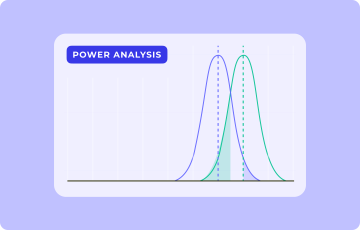
How do I get my teams to make data-driven decisions?
This interview is part of Kameleoon's Expert FAQs series, where we interview leaders in data-driven CX optimization and experimentation. Our guest, Josh Wolf, brings a wealth of experience as the Senior Director of Solutions Consulting at Tealium, a leading Customer Data Platform (CDP). Josh works with partners across leading martech companies, agencies, and service providers to help solve their customer data challenges.
What does it mean to be truly data-driven in decision-making?
Data-driven decision-making is a powerful concept that can transform your business, but you need to follow a process. By defining your goals, testing hypotheses, and analyzing results, you can consistently make informed decisions that drive success.
For instance, using A/B testing can help marketers make better data-driven decisions. Leading to a deeper understanding of their audiences, optimized campaigns, enhanced targeting, and maximized ROI.
The data required to make such decisions depends on your experiment’s hypothesis. At Tealium, we encourage customers to work backward. Start with your goal—what needs to be tested, and what data is required to make a decision? This allows you to identify the required data sources.
Let’s say your goal is to re-engage old customers, and you hypothesize that personalized messages will work best. You create a test showing different messages to each customer segment and track the campaign across touchpoints.
You’ll need data on each segment and message alongside the control group. The data will show you whether it’s worth running a personalized campaign and which campaigns are most successful. Even then, your “winning” campaigns shouldn’t be static but rather the ‘current state’ in a constantly evolving program.
What techniques can I use to encourage data-driven decision-making?
Encouraging data-driven decision-making within your organization requires a combination of cultural, procedural, and technological approaches.
From a cultural standpoint, your business must emphasize the value of data-driven decision-making and, if possible, require these approaches. You can offer training and incentivize data-driven decisions by rewarding teams and individuals who use the approach.
Your company procedures should ensure data is available for decision-making. Demonstrate how to use a data-driven approach by setting clear business goals and key performance indicators (KPIs.) Define metrics that matter and ensure they are regularly evaluated.
Your technical setup should ensure that data is clean and consistent. All your teams should be able to access the necessary data in real time or as close as possible.
Where should data be stored to make it accessible and searchable for non-technical teams?
Data should be available within the tools each team is most comfortable using. As an integration hub, Tealium enables you to share consistent data with every tool that needs it. This allows all teams to use the best tools available or switch if a better one is found.
In what ways can AI help scale data-driven decision-making across different customer touch-points?
Businesses have used decision-making tools that provide a “next best action” (NBA) for many years. Historically, most of these decisions were rule-based and did not leverage AI. More recently, companies have customized AI algorithms or created their own to make superior decisions.
Ideally, your business wants to scale AI decision-making across customer touchpoints, from in-store visits to on-site personalization. But you should be aware of the challenges. There is often a delay before AI decisions are available due to batched data collection and the time needed to standardize and cleanse data.
Also, distributing data to online and offline channels is a complex task. Using a CDP platform like Tealium overcomes these challenges with real-time data collection, distribution, and AI insights that can be used for activation elsewhere.
Once your business decides to use AI decision-making and cross-channel personalization, the next challenge you’ll face is creating enough content to support the initiatives. For example, content can include scripts for phone and chat operators, copy and images for emails, or advertising creative. Since content creation requires a significant investment, it often blocks the growth of your strategy.
AI can now generate this content, cutting the cost and time involved. At this point, you still need to check it to fine-tune and approve it. However, AI guardrails are becoming more accurate and widespread, requiring less oversight by you and more ability to scale.
How should I ensure the data used to make decisions is reliable?
Evaluating data requirements and data quality can require a significant amount of work. So, involve various cross-functional teams and emphasize the benefits of offering a 1:1 personalized customer experience.
Work backward from your goals to understand what analysis needs to be done, which customers are most important, and how they are segmented. Knowing these details informs which sources of data you need. Then, walk through your collection, cleansing, enriching, and data storage processes. These processes must be monitored to ensure you maintain quality and reassure teams the data is reliable.
How can I structure data from across the customer experience so teams can more easily spot problems and opportunities for hypothesis development?
Your data must be standardized as it is collected across touchpoints to help teams spot opportunities or problems. It should then be delivered to teams in their preferred format and tools.
You should also encourage open communication between teams so they share hypotheses, analysis, and insights with one another. By creating an environment with high-quality data and cross-team collaboration, you encourage high-quality decision-making.




